The Good…The Bad….And The Ugly
Well, here is the post that I have been promising you all winter long. Are you ready to begin spring pruning? Okay, let’s get started…..
Those of you who have read my blog for any length of time have come to learn that I absolutely abhor formal pruning of flowering shrubs. I have posted about it twice and you can read more – Shrubs Aren’t Meant To Be Cupcakes and Read The Label Or You Might End Up With Cupcakes if you like.
First, we will start with the Bad (and ugly) – I am warning you, the following photos are not pretty. They show the results of formal pruning over time.
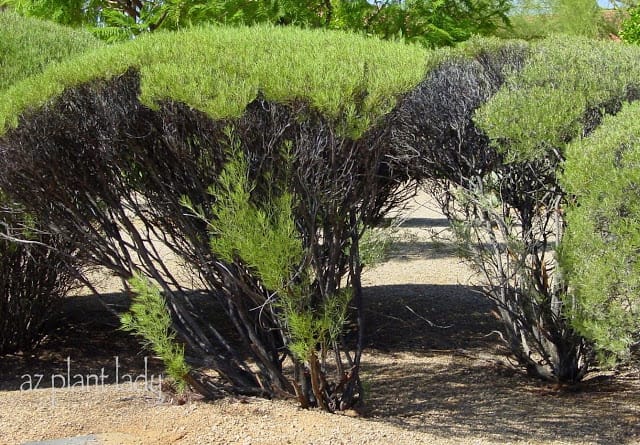
Feathery Cassia (Senna artemisiodes) Dead areas are a result of repeated shearing of the shrubs.
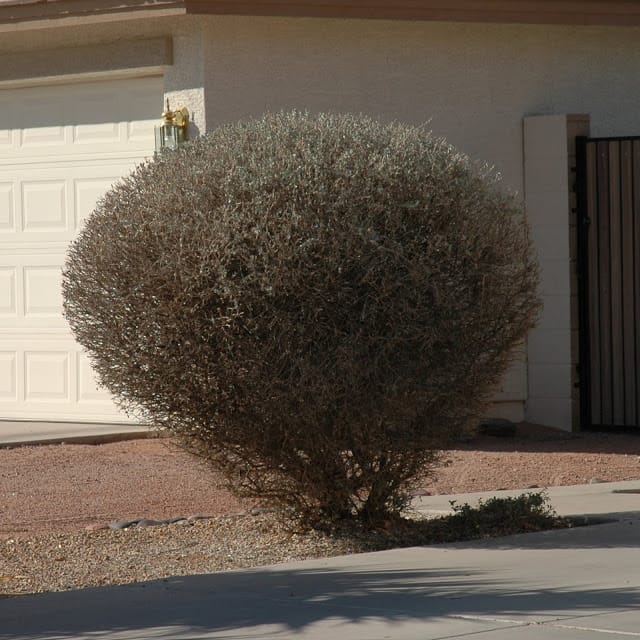
Texas Sage, sheared repeatedly, resulting in more dead then live wood.
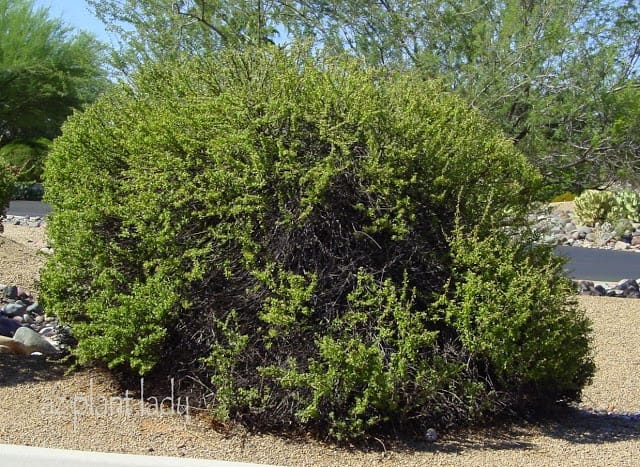
Texas Sage ‘Green Cloud’ (Leucophyllum frutescens ‘Green Cloud’) Over the years, this flowering shrub had been sheared resulting in dead growth.
The following photos are not necessarily ugly but are examples of formal pruning that leads to the problems pictured above over time as well as higher maintenance.
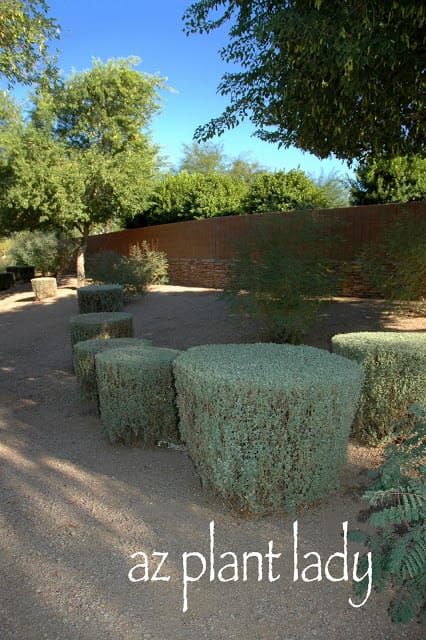
White Texas Sage shrubs, pruned as cupcakes.
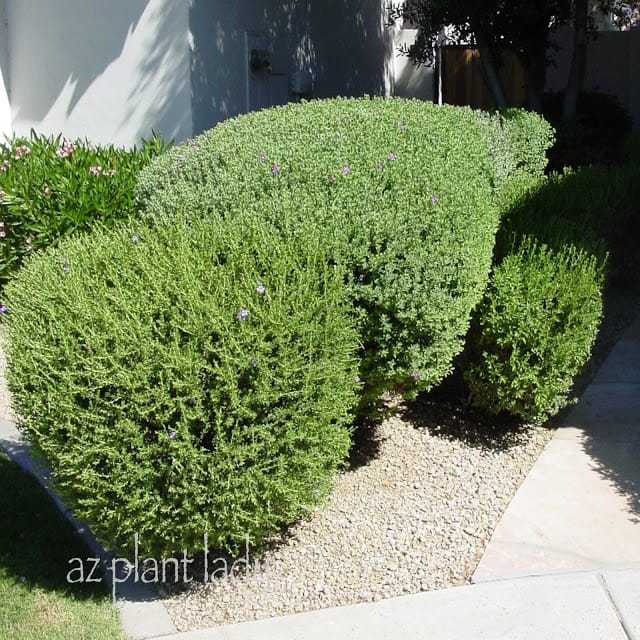
Chihuahuan Sage (Leucophyllum laevigatum) formally pruned and rapidly outgrowing its space.
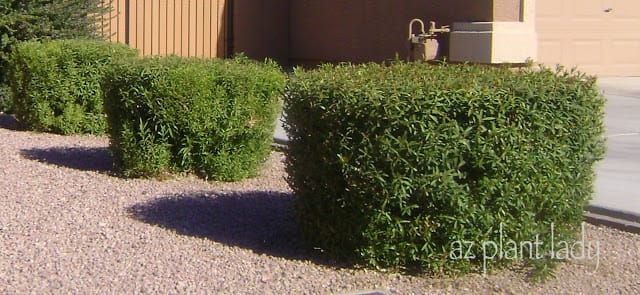
Dwarf Oleanders (Nerium oleander)
As I have mentioned before, I am not against formal pruning when it is done to plants that specially suited to it such as Dwarf Myrtle, Boxwood, and others. However, formal pruning of flowering shrubs shouldn’t be done for many reasons, including:
– It removes the flower buds, severely curtailing the number of flowers that bloom.
– Causes the shrub to constantly work to replace the leaves that were removed, which causes stress to the shrub and ultimately shortens it’s life.
– Increases the maintenance required because of frequent pruning, which means more material is hauled off to the landfill as well as a higher landscape bill.
– Over time, repeated shearing causes branches to die off due to lack of sunlight reaching the interior of the shrub.
– The shrubs requires more water because it is constantly having to regrow what was removed.
– And lastly, creates a generic looking ‘blob’ in the landscape where a beautifully shaped and flowering shrub should be.
Okay, now some of you may have shrubs that look like some of these. But, don’t worry…there is hope and the solution is really quite simple. What they need is to be severely pruned back. This type of pruning is called “Severe Renewal Pruning.”
Now, I do need to warn you…many of us are familiar with the concept that beauty comes at a price. Well, there is a price to be paid in order for shrubs to look their best and show off their stuff and it requires an Ugly stage.
WARNING…the following photos are not pretty.

Severely pruned Texas Sage in spring
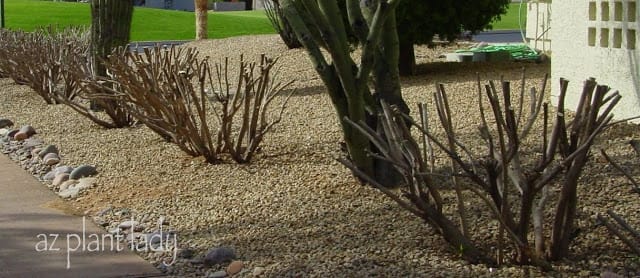
Severely pruned Dwarf Oleander
Okay, I warned you….but this is what you want your shrubs to look like after you are done pruning. I realize that all that is left are bare branches sticking up from the ground…BUT THIS IS GOOD!
Severe pruning like this removes old wood, which become unproductive over the years and does not produce as many leaves or flowers. It also stimulates new growth in the form of new branches that will produce more leaves and flowers. It also keeps the size of the shrub in check by reducing the size periodically and decreasing the amount of pruning needed later on.
Now, this type of pruning does not need to be done each year…I actually recommend doing this every 3 years or so.

Texas Sage 4 weeks after pruning
I won’t lie and say that the ugly stage disappears right away, but in 4 – 8 weeks, you will rewarded with new growth that will rapidly cover the bare branches.
**There is a chance that your shrubs will not recover from severe pruning. However, that is usually an indicator that they would not have survived for long if you had done nothing. So, you really have nothing to lose and everything to gain by pruning your plants this way every few years – you may easily add years on to the life of your shrub and dramatically increase their health and beauty.
Okay, I have covered the bad and ugly. Now for the good and beautiful…
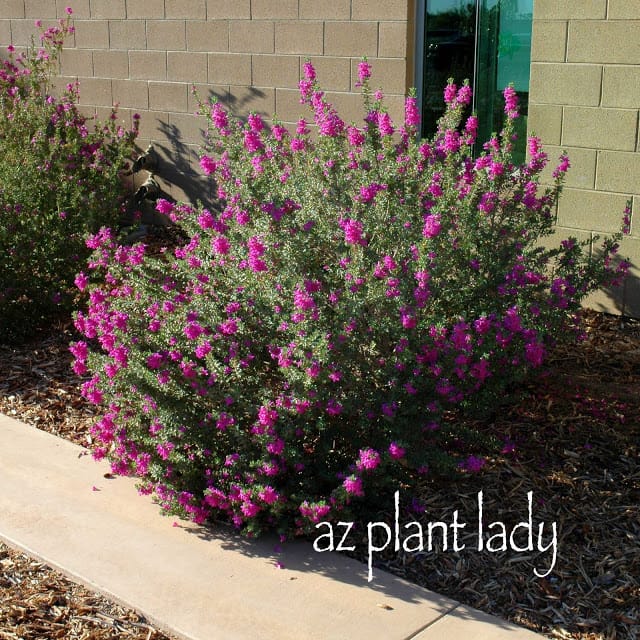
Texas Sage ‘Green Cloud’ (Leucophyllum frutescens ‘Green Cloud’)

Desert Senna (Senna artemisiodes sturtii)
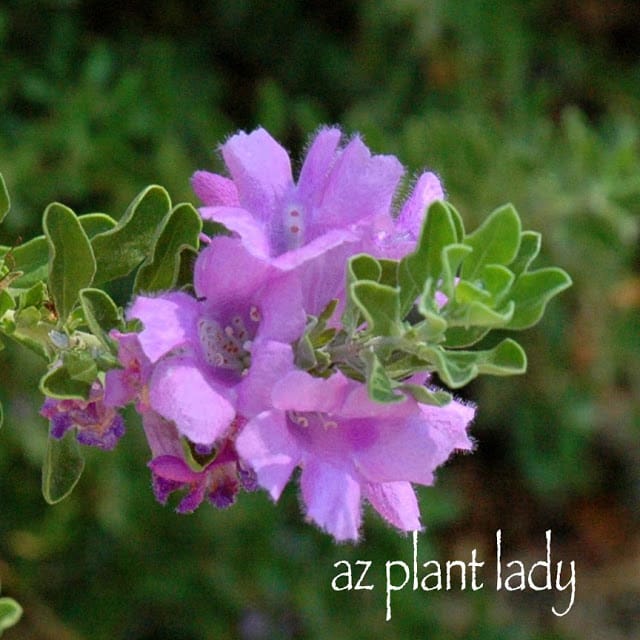
‘Rio Bravo’ Sage flower
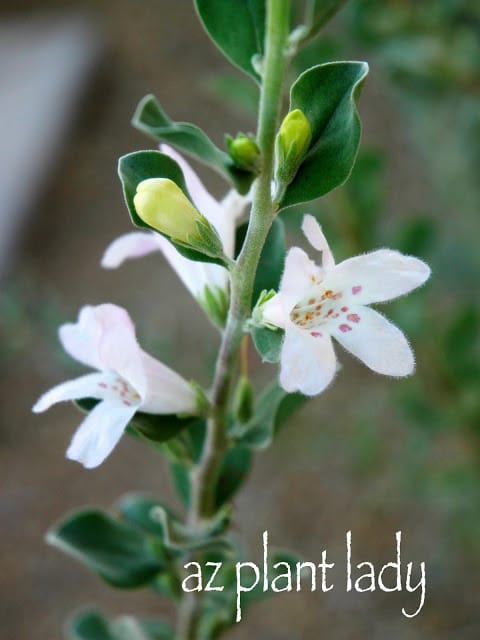
‘White Cloud’ Texas Sage Flower
These beautiful photos should be reason enough to stop formally pruning your flowering shrubs. So, put down your hedge pruners. All you will need in the future are hand-pruners and loppers.
You may be wondering when should I prune my flowering shrubs? Well, Texas Sage and all Leucophyllum species can be severely pruned back in March as well as Oleanders. I do not recommend pruning them back severely in the summer months as they may not be able to grow back while dealing with the stress of the heat. Alternatively, do not prune in the fall or winter as you will have naked branches for a long, long time and new growth that does appear will be very susceptible to frost.
Cassia species should be pruned back once they have finished flowering, which is usually in late spring.
When it comes to pruning, a good rule of thumb is to prune less frequently, but when you do, prune back more severely.

 Noelle Johnson, aka, 'AZ Plant Lady' is a author, horticulturist, and landscape consultant who helps people learn how to create, grow, and maintain beautiful desert gardens that thrive in a hot, dry climate. She does this through her consulting services, her online class Desert Gardening 101, and her monthly membership club, Through the Garden Gate. As she likes to tell desert-dwellers, "Gardening in the desert isn't hard, but it is different."
Noelle Johnson, aka, 'AZ Plant Lady' is a author, horticulturist, and landscape consultant who helps people learn how to create, grow, and maintain beautiful desert gardens that thrive in a hot, dry climate. She does this through her consulting services, her online class Desert Gardening 101, and her monthly membership club, Through the Garden Gate. As she likes to tell desert-dwellers, "Gardening in the desert isn't hard, but it is different."
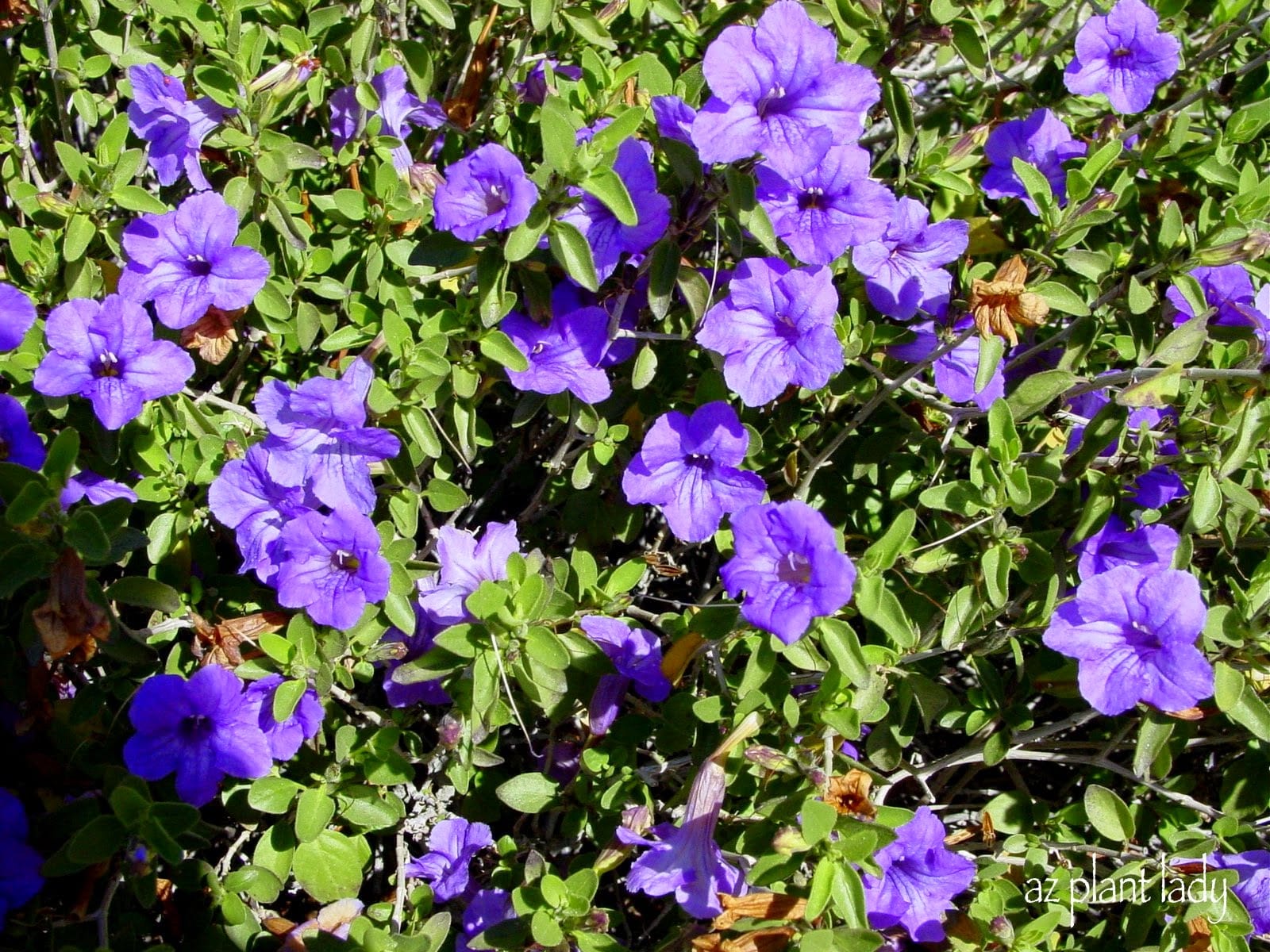

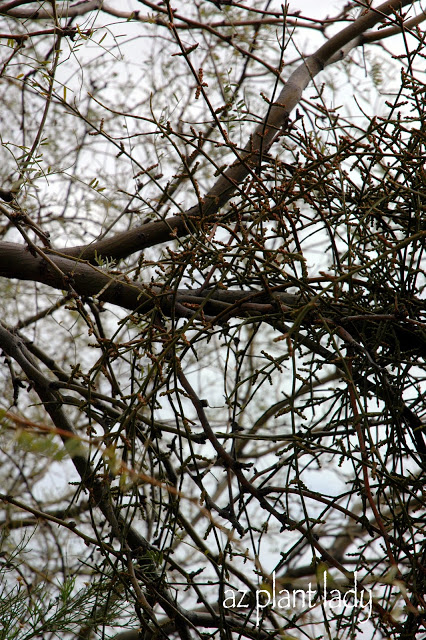










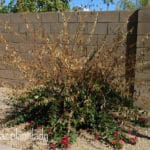

Glad you aren't charging for these classes…good information here, some I did not know!
Really, I have no idea why people would willingly and deliberately "cupcake; or hedge their flowering shrubs. Too bizarre.
Noelle: Another great post including lots of information! The other day, when I visited an apartment area, I noticed the previously formal prunned hibiscus bushes are now popping up flowers. I was thinking if they just did the hand prunning, they might got more flowers now. What do you think?
Great post. When I moved to my house, not only the yews but forsythia and azaleas had been given a "buzz cut" by the prior owners. Dreadful. Thanks for covering rejuvenation pruning so clearly, as well.
Great post, the severe cutting back is shocking, but well worth it in the long run. I like the information that if it does them in, they probably wouldn't have lasted long. Takes the pressure off of whether to do it or not. 🙂
Dear Noelle, I completely agree with everything you have said and shown in this informative, if not always pleasing in appearance, posting. Formal pruning or topiarising, I believe, is only suitable for yew, box, maybe myrtle and possibly something like Lonicera nitida. Shrubs which flower, such as those you describe, should never be forced into these ungainly shapes. They look ugly and unnatural AND do not really flower as they should.
I never heard this "cupcake" term before but isn't it apt! I think this style of pruning must result from a personality disorder ;-] or from a time when humans thought it best to really stamp their identity onto the natural world, and replace the intrinsic identity of the plants. Very well put together and informative read! Thanks for dropping in to read about ferns on our blog 🙂
Lovely, Noelle, and I appreciate the information. My parents have a row of azalea bushes at the front of their house that were pruned to fit into a squared-off row of boxwoods for years — resulting in severe die-off and dead wood problems. I couldn't think what to tell Dad when he asked me about it, other than that it seemed obvious the interior branches were overcrowded, easily trapping debris (poor air circulation) and couldn't possibly be getting enough light. I'll pass along your article!
(I meant to say that the finished, naturally-shaped bushes were lovely — obviously not all of those photos were lovely. The first ones are frightful… and only too common, sadly.)
Good, useful information. Thanks, Noelle! Blooms are gorgeous!
Hi Noelle. Now you well know why I have just a few shrubs. LOL! I am a disaster waiting to happen when pruning. You have been showing some great information on pruning. Thanks!
This post comes at a very appropriate time. I spent the past few days pruning roses — it takes a long time for a few roses when the dog helps. We finally got the rose debris hauled off to be burned, this morning.
Bees are busy in the boxwood blooms so I can't prune them now that the time is right. New growth is eminent. Tomorrow is 100% rain. I bobbed off the dead tops of Esperanza and dead Vetiver grass and other plants with winter kill. The crape myrtle tops that are small enough for me to reach got pencil-sized stems cut, no crape murder.
Everywhere I'm cutting, I see daylily foliage peeping out, buds on Oakleaf hydranga, lilies sending up tentative first leaves before sending the bloom stalk — all the first little signs of what's ahead.
I look forward to your next post.
I look forward to the next installment. Most of my neighbors employ gardners who love to turn all plants into "cup cakes". I prefer to take care of the yard myself and want my plants to look natural but neat.
Noelle, great post! I made mistakes back in my more formal gardening phase of over-manicuring some poor unsuspecting shrubs, mostly with disastrous results long term. A friend counseled me into some 'rejuvenating' pruning, and I was sure I'd kill the plants. Scenes like that of your pruned, stubby, Texas sage can be initially quite shocking. However, it's amazing how fast the plants grow back, as the roots are unharmed, and can sustain lots of new growth. I've learned my lesson since then, and now that we have much more room, I'm enjoying seeing the natural structure of our plants in the gardens, and I can divert my energy away from the shears, toward more productive gardening tasks.
You are providing a real public service, here Noelle. The urge by the power equipment crews around here that can only use the gas powered hedgetrimmers, weed whackers, mowers and blowers is a shame. Good plantings that could be artfully pruned, much less frequently, are tortured into the dreaded cupcakes and worse. I wish they would read your blog! 🙂
Frances
Pat doesn't let me prune any of our bushes because I don't know what I'm doing. I can happly live with that. I did cut back two forsythias to about a foot off the ground. They died mid summer a couple years ago. or we thought they died. They came back and are doing great. Great post. jim
Great post. Pruning is a mystery to most folks, me included. I'm always worried I've damaged the plant. It was nice to get your reassurance.
Even so, don't know if I have the courage to cut the Texas Sage down as far as your pictures. Our cenizos are a tall variety and have done well without pruning thus far…but it's only been 3 years…
Pity the cupcake pruners will never get to understand this vital information.
I guess most gardeners are just satisfied in shearing shapes than actually understanding the plant types.
This happens a lot for hibiscus & bougainvilleas in my place & its a pity to see an overgrown branch stick out with the flowers after the cupcake pruning.
Noelle, I see cupcakes and formally pruned hedges that are not meant to be tortured into those ridiculous shapes~C&L's Hedge would look better if he were a shearable hedge…but he's a forsythia and they are not meant to be sheared formally. Thanks for a great post…gail
Good examples Noelle ~ I have a perfect one in my backyard too. The lilacs ~ they've never been pruned and now they are tall, spindly sticks with flowers at the very tops that I can't even smell. This year I am chopping them down ~ just like your one photo showed. I hope it helps for next year. Great lesson for all of us.
Thank you all for your kind comments. I do hope this helps. There is quite the epidemic here with 'cupcake', 'poodle' and 'ball' pruning of flowering shrubs.
aloha noelle,
thanks for a wonderful and educational post..i love formal styles but not the maintenance so it will have to be more relaxed for me 🙂
What ??? You don't like the candelabra look to your shrubs? haha… those first few photos look like my neighbor's shrubs. What a shame people do this to the plants.
Good job Noelle. great info!
I am sure those information will help a lot of blogging gardeners. They are very well organized and said, and the results are convincingly true.
Ha. I love the cupcakes, kind of how I love horror B-movies. I've never understood why people like the "blobs" as you say. It completely destroys the architecture of the plant. Nature doesn't grow in straight lines. I had a landlord that hedged everything. It drove me nuts. To help things recover from hedging I usually just remove whole branches to let in some light and prune all the growth that points inward. It takes longer, but avoids the bare stump stage, something that would send some of my clients into fits.
Noelle, I have some overgrown yews in front of my house that have gone way past the cupcake stage. I've tried to convince my husband to just dig them out (quite a job) and start over, but he's not convinced. I'm wondering if I can do the same kind of severe pruning to them.
I think I would have a hard time pruning those flowering shrubs to that extreme:) Thanks for the great advice!
Thanks so much for sharing this type of post. It's so informative and real, and very useful to a new-ish homeowner just learning to care for plants. So far, I've only braved lilacs and butterfly bush, but there is so much to learn and experiment with. 🙂
Noelle, your pruning information, and the images to go with it are an invaluable lesson for anyone with shrubs. I too get so tired of seeing shrubs look like mushrooms, boxes, poodles, and such. I have even seen heart shaped bushes, no kidding. I especially like your severe pruning tips – it really does help to rejuvenate the plants. Thanks! Kathy
You make such good points here Noelle! Your photos are worth a hundred words and should inspire any who take up pruners and do harm to their flowering shrubs. Well done!
Another great post that shows what you don't want to have shrubs look like and how to fix them. I love the Texas Sage!
So glad picks are back since I missed this post.
Can you do this to nandinas? We bought a house in the fall and it has the worst looking nandinas in the front. Eventually I want to remove some of them and add some variety to my garden but for now I just want to make them prettier and healthier.
Hello Cassie,
You can prune back your Nandinas. Since you didn't mention where you live, I will base my recommendations on zone 9a, which is what the greater Phoenix metro area is.
If you do decide to prune back your Nandinas severely, there is always a chance that it may not grow back. But severe pruning is oftentimes just what old, woody shrubs in order to rejuvenate them and help them to look much better.
Thank you so much for your question and good luck!
Noelle
Thanks so much for this post. I am not real experienced and found your post "googling around" about drastically pruning bushes. I am on a military base in the Mojave with two eyesore Texas sage bushes that they have the landscaping guys prune, and your post gives me the confidence to have my husband and I take things into our own hands. 🙂 If by chance the bushes do not grow back, is there any problem or recommendation regarding digging it up and planting a new one in its (pretty well same exact) place?
(If you don't have time to respond,no problem – I will just keep my fingers crossed that the pruning will work magic.) Thanks again! 🙂
Hi Heather,
If I were you, I would select the same shrub for the same place as long as there is enough room for them to grow. I think you will be surprised at how well the pruning will work.
Good Luck!
Noelle (azplantlady)
Thanks for your time and response, Noelle!
Hello again Noelle. My husband and I pruned our eyesore Texas sage bushes and I have one more question for you if you have a minute. Your last statement in this post was …
"Later, I will cover how to lightly prune your flowering shrubs in order to keep them healthy and beautiful."
I could not find a post that discussed this. Is there a way you can supply a link to it if you indeed did post on how to maintain after doing this renewal pruning?
Thanks again for your help. I am so relieved to have pruned those bushes! 🙂 tilol
Hi Heather,
I'm sorry, but I think you are right. I didn't post a follow-up post. However, light pruning is very easy to do. Simply prune 1/3 of the outward growth of your shrubs using hand-pruners. Just go for a natural look. You don't have to prune each branch the exact same height, but I do recommend varying the heights within 6 inches of each other.
I hope this helps until I get a post up about lightly pruning 🙂
Noelle
Perfect! Thanks!
Did you ever get around to a post onlight pruning? I am also wondering how to prune cherry sage plants we just planted last year
Hi Tiffany. I am embarrassed to admit that I haven't done a list on this yet – although I am always writing consults up showing my clients how to do it. I promise that I will write about light pruning in the spring when pruning time gets nearer 🙂
No worries! I am thinking light pruning is what I should do to my new cherry sage (salvia)… What would you suggest?
Hello,
Go ahead and prune your Cherry Sage (Salvia greggii) now, which is the best time. Simply prune them back 1/3 to 1/2 of their current size.
Good Luck!
Thank you for your advice!!!